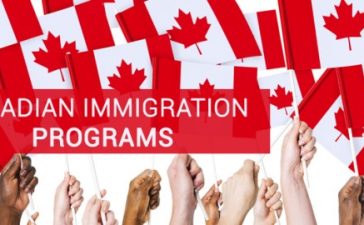Migration to Canada Made Easy
If you are planning to migrate to Canada, you will need to learn about several factors first. Among them are the immigration process, the health care system in the country, and the costs involved. Fortunately, there are ways to make the transition easier.
Asylum Seekers
Asylum seekers are people who seek protection from persecution. This may be from gang violence or natural disasters. They are also seeking to work in Canada. Many come to the country to study or join family.
The government of Canada has specific requirements for refugees. Refugees may qualify for social welfare, housing assistance, education, and legal aid. These services are available through the government or through private organizations.
Refugee claimants go through security and health screenings before they are allowed to apply for refugee status. These screenings are to ensure that the individual is not a security risk.
Once an asylum claim is made, the person is temporarily housed in an accommodation centre. The government also provides them with health care while officials evaluate their cases. After a period, the person will receive a permanent place to live.
Resettled refugees are granted permanent residence in Canada after they undergo security and health screenings. These programs are overseen by the United Nations Refugee Agency.
Economic Migrants
Economic immigrants are generally viewed as a positive element of Canadian society. This is because they add to Canadian’s heritage, and they also help to improve productivity and technological progress.
Economic immigrants are often recruited through a federal high-skilled worker program. They can eventually obtain permanent residency. In addition, there are temporary pathways.
A points-based system prioritizes candidates with job offers and high levels of experience. It also gives preference to applicants who are younger and bilingual.
Canada also has a Provincial Nominee Program. These programs, along with the Federal Experience Class, focus on skilled migrant selection. Both programs aim to increase the proportion of economic immigration.
According to Immigration and Refugee Canada, one in four of the new permanent residents welcomed to Canada is through an economic stream. Economic immigrants are usually sponsored by their employers. As such, they have little or no negative effect on wages for other workers.
Study Abroad
If you’re looking for an opportunity to gain an international education and experience, Canada is a great destination to consider. The country is home to many of the world’s leading institutions and offers a variety of scholarships.
In addition, Canadian students have access to a vibrant, multicultural community that enhances their educational experience. It also allows them to learn about the culture and lifestyle of a new country.
A study abroad in Canada can help you hone your skills and get the job of your dreams. After all, if you want to succeed in the world, you’ll need to learn to communicate with people from different backgrounds.
There are many things to consider before you make your decision. First, you’ll need to research what type of visa you need and which courses you’re interested in. Next, you’ll need to determine the best living situation for you and your family. You may decide to stay in Canada for the duration of your studies, or even extend your stay after graduation.
Healthcare in Canada
Having one of the best healthcare systems in the world is one of the most popular reasons why people choose Canada. In addition, the government of Canada provides free emergency medical services. However, access to quality healthcare is not without its own challenges.
As a result, a recent study explored the barriers and opportunities faced by new immigrants to the healthcare delivery system in Saskatchewan. The results showed that a comprehensive approach is needed to improve healthcare access.
Barriers to healthcare access included a lack of support and mistrust of the healthcare system. Some participants reported feeling overwhelmed by the system and had a negative therapeutic relationship with their healthcare providers. Other participants had problems with the timing and frequency of visits.
Access to care was limited by a high wait time. Participants cited the referral process as a barrier to accessing specialist care. Wait times for surgical procedures were a concern. However, a number of strategies were implemented to improve waiting times. This includes implementing a network of primary care physicians who refer patients to specialists.


